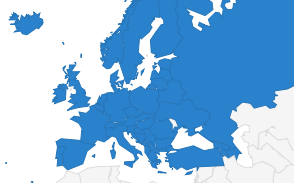North Macedonia: A majority of female journalists face online harassment

The European Federation of Journalists (EFJ) is worried by the results of a new study by the Platform for Investigative Journalism and Analysis (PINA). The results reveal an important issue when it comes to the protection and prosecution of online harassment against women journalists in North Macedonia. In collaboration with its affiliates, the Association of Journalists of Macedonia (AJM-ZNM) and the Trade Union of Macedonian Journalists and Media Workers (SSNM), the EFJ called for the adoption of the long-awaited amendments to the Criminal Code in North Macedonia to deal with all types of attacks against journalists ex officio.
According to the survey conducted by PINA with the support of the OSCE Mission in Skopje, 81.6% of the survey sample of 103 female journalists have been harassed online in North Macedonia.
This puts the country above the global average of 64% of women journalists who have faced online violence, according to a survey published in 2018 by the International Federation of Journalists (IFJ). The high number of online harassment in North Macedonia is more than a snapshot, says Darko Duridanski, SSNM Project Manager:
“The attacks against women journalists in Macedonia in recent years have increased significantly as PINA’s research showed. Our research, contacts as well as surveys show that every year the online attacks are constantly growing.”
The answers of the North Macedonian female journalists are concerning. A majority (84.6%) say they know which institution to turn to to report a case of online harassment, however only 25.2% turned to the competent institution and 32% turned to their newsroom. Almost half of the respondents (43.7%) did not report the case. A possible reason is given in the report:
“Almost half of women journalists who reported online harassment and attacks were very dissatisfied from the cooperation with the institutions and only two interviewees said they are satisfied.”
Dissatisfaction with the prosecution of cases is a problem our affiliates in North Macedonia are well aware of.
“There is no appropriate reaction from the competent institutions,” commented Duridanski.
Together with other media organisations, they regularly ask for better results in stopping the impunity of online attacks against media professionals. “Our main hope now is that long-awaited amendments of the criminal code will be adopted because they are supposed to strengthen the fines for attacks against journalists and to treat all types of attacks against journalists ex officio.”
The changes to better protect journalists were announced in July 2021 by Justice Minister Bojan Maricic but still have not been passed. Appropriate reaction from the prosecutors’ office and Ministry of Interior is of high importance in these cases.
Stopping the impunity is the only thing to make it even possible to expect a decrease of attacks, Duridanski added.
The AJM-ZNM noted 79 serious incidents in the last eight years in their register of attacks, of which 24 are physical assaults on journalists performing their duty. “Only four have been resolved with a court verdict, meaning that we are facing high impunity”, says AJM-ZNM Director Dragan Sekulovski. Actions have been taken:
“Currently, we are working with the Ministry of Interior on a joint protocol for the safety of female journalists online. This tool should help the journalists to report incidents more efficiently but also mobilize the competent institutions to be more proactive when the right of the journalists are endangered.”
The motives for harassment were, according to female journalists interviewed by PINA, mostly publications of journalistic articles “aimed at other centers of power” (56.6%), “about social developments that were critical of the authorities” (43.4%) and “about social developments that were critical of some party” (36.1%). A smaller number of respondents said that they have been harassed because they have expressed personal views and opinions.
Three types of online harassment prevail: private photos shared on social media (29.7% of cases), online stalking (22%) and organised campaigns (18.7%). The source of the insults, threats or attacks is generally unknown.
Besides these alarming examples, the survey also points out that for more than half of the women journalists who faced online harassment, the experiences did not cause changes in further behavior. Some respondents tend to ignore such content, accepting it as part of the profession. According to the PINA survey report, this shows “a high degree of normalisation of online harassment.”
The entire detailed analysis of PINA can be viewed at the following link.






